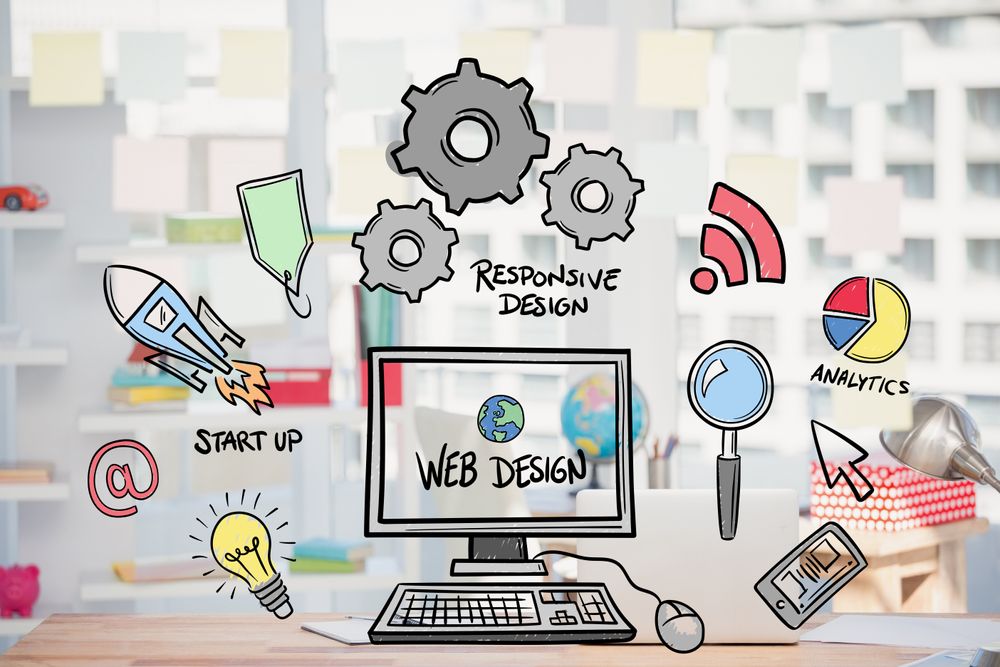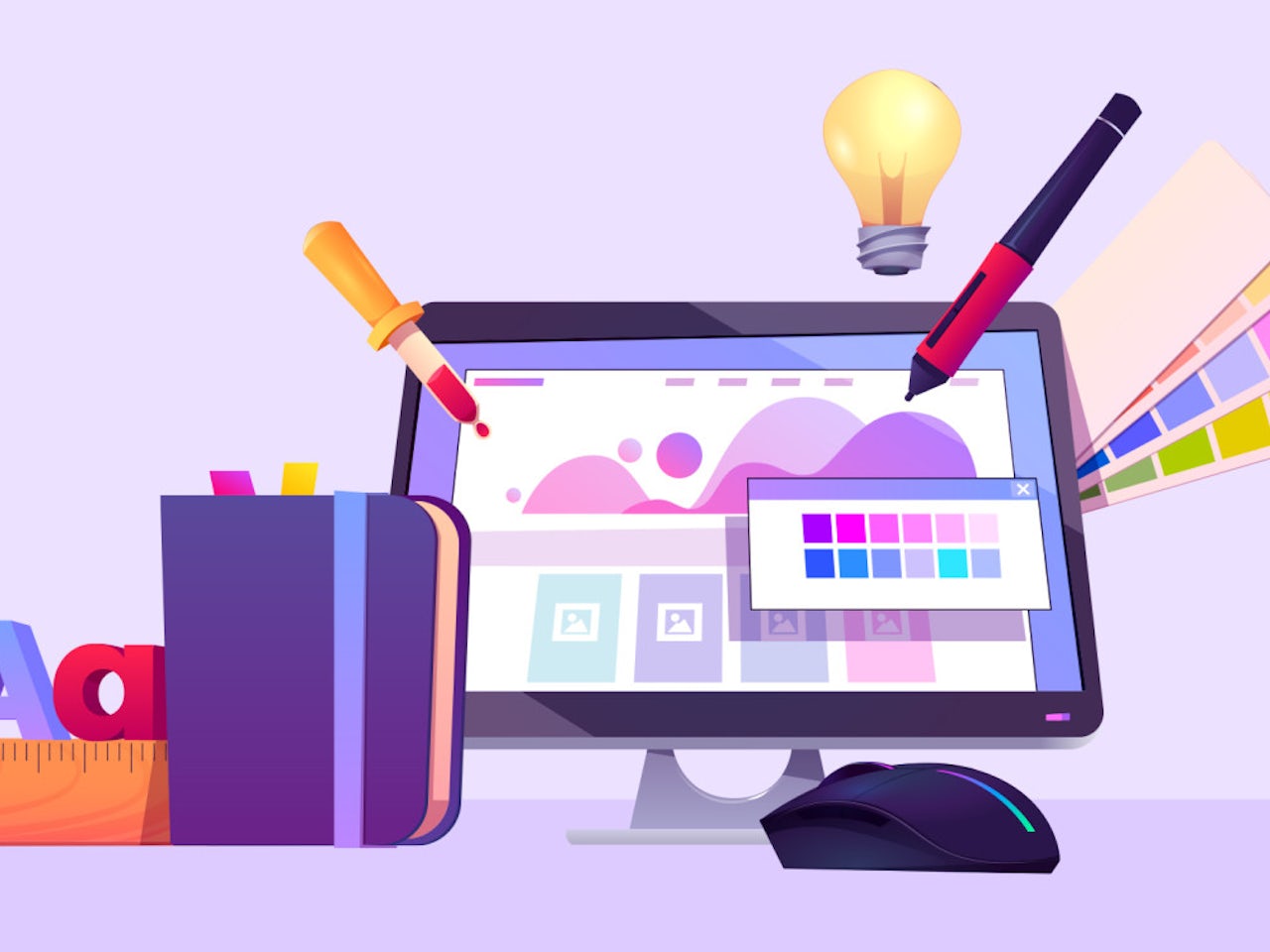The Value of User Experience in Effective Web Design Strategies
User experience (UX) functions as a cornerstone in efficient web design strategies. It forms just how individuals engage with a site, influencing their complete satisfaction and probability of returning. A well-designed UX can enhance involvement with instinctive navigation and receptive designs. Neglecting these facets might lead to frustration and increased bounce rates. Comprehending the details of UX is crucial for developers intending to produce engaging digital experiences that resonate with diverse target markets. What elements really drive effective user involvement?
Recognizing User Experience and Its Influence on Design
User experience (UX) is commonly viewed as a plain aspect of internet design, it essentially shapes exactly how customers communicate with a website. UX encompasses all aspects of the user's communication, consisting of functionality, ease of access, and total fulfillment. A positive UX cultivates interaction, motivating customers to explore the website and return in the future. Alternatively, an adverse experience can cause disappointment, causing high bounce rates and lost possibilities for conversion.
Layout components like content, navigation, and layout organization play important functions fit this experience. Reliable UX design expects user requirements and choices, ensuring that information is quickly available and aesthetically attractive. Additionally, comprehending user behavior through analytics can give useful understandings, informing style decisions that improve use. Eventually, a thorough understanding of UX permits designers to develop internet sites that not only bring in individuals yet likewise promote purposeful interactions that line up with organization goals and user expectations.
Key Principles of Efficient User Experience
Efficient user experience depends upon a number of vital principles that boost web site capability and involvement. Intuitive navigation design, receptive format basics, and the importance of visual pecking order are vital components that contribute to a seamless communication between individuals and internet content. Understanding these principles enables developers to develop even more easy to use and available digital settings.
Instinctive Navigating Design
When customers run into a web site, user-friendly navigation style functions as an important portal to their general experience. Reliable navigating enables customers to effortlessly situate the info they look for, improving their communication with the website. Secret concepts include clear labeling, rational company, and constant placement of navigation elements. Tags must be uncomplicated, permitting individuals to anticipate the material they will find. A well-structured hierarchy aids users recognize the connection between different sections, leading them via the website perfectly. In addition, receptive menus and easily obtainable links add to a fluid experience throughout tools. By prioritizing intuitive navigating, designers can significantly lower user irritation and rise involvement, ultimately cultivating a positive understanding of the site and its content.
Receptive Layout Basics
A well-structured navigation system normally leads to the demand for a responsive format, which is vital in today's varied digital landscape. A responsive format guarantees that websites feature perfectly throughout different devices, consisting of desktops, mobile phones, and tablets. This flexibility improves user experience by enabling material to be easily available and aesthetically meaningful, no matter display dimension. Trick concepts of responsive style include liquid grids, versatile images, and media queries, which promote optimal viewing. Additionally, prioritizing touch-friendly components improves communication on mobile devices. By executing a receptive layout, developers can accommodate individuals' needs, lessen bounce rates, and boost interaction. Ultimately, a well-executed receptive style fosters a favorable user experience, motivating site visitors to check out the site better.
Aesthetic Pecking Order Importance
Aesthetic power structure plays an important function in directing individuals via an internet site, guaranteeing that vital information catches their interest. By strategically using size, color, contrast, and spacing, designers can create a clear path for customers to comply with. Larger components frequently attract the eye, indicating their relevance, while contrasting colors can highlight contact us to activity. Additionally, constant positioning and collection of relevant material improve comprehension, making navigation intuitive. Efficient use aesthetic pecking order not just boosts use but also sustains the general visual of the website, promoting a favorable user experience. When users can easily recognize the most important details, they are more most likely to involve with the material, bring about enhanced contentment and interaction with the web site.
The Function of Usability in Web Design
Usability plays an essential duty in web design, specifically via navigating simpleness and adherence to ease of access standards. Efficient navigation improves user satisfaction by permitting site visitors to find details quickly and without effort. At the same time, conference ease of access standards guarantees that all users, despite their capabilities, can effectively engage with the website.
Navigating Simplicity
Simpleness in navigating stands as a foundation of efficient web design, significantly affecting user experience. A streamlined navigation system allows users to discover details promptly and intuitively, decreasing stress and boosting complete satisfaction. Clear labeling and rational structure are important aspects, assisting individuals easily with the site. Redundant links or overly intricate menus can disorient individuals, bring about raised bounce rates. In addition, mobile responsiveness should be thought about, making sure navigating remains simple throughout gadgets. Lessening and focusing on crucial web pages clutter additionally supports user involvement. Effective navigation not just fosters a favorable experience but additionally motivates users to check out the website extra completely, ultimately leading to Web Design services higher conversion rates. Hereof, navigation simpleness offers as an essential element in the total performance of web design strategies.
Ease of access Criteria
User interaction is considerably improved when websites stick to availability requirements, making sure that all individuals, no matter their capabilities, can navigate and interact efficiently. Compliance with these requirements not only broadens the audience but also improves general user fulfillment. Obtainable design incorporates features such as message options for photos, key-board navigation, and adequate color comparison, which facilitate usage by people with disabilities. Additionally, applying these standards can favorably influence search engine optimization (SEARCH ENGINE OPTIMIZATION) by boosting website structure and clearness. As web design evolves, focusing on access ends up being necessary in cultivating an inclusive digital setting. By accepting these requirements, designers add to a much more fair net, eventually driving user loyalty and interaction.
Importance of Responsive Layout for User Interaction
As consumers increasingly gain access to websites via a selection of gadgets, the significance of receptive style becomes extremely important for engaging individuals successfully. Receptive design assurances that an internet site adjusts perfectly to various display sizes, giving a suitable watching experience regardless of the device utilized. This flexibility boosts user involvement by helping with much easier navigation and interaction with material.
When individuals experience a web site that is responsive, they are more probable to stay much longer, discover better, and return in the future. A well-designed receptive design minimizes the stress frequently connected with zooming and scrolling on smaller displays, therefore minimizing bounce prices. Additionally, responsive design can positively affect online search engine positions, as internet search engine focus on mobile-friendly sites. In today's electronic landscape, where mobile use proceeds to increase, executing responsive style is not just valuable, but essential for keeping user engagement and ensuring a favorable experience throughout all tools.
Enhancing Load Times for Better User Fulfillment

To boost tons times, web designers must prioritize enhancing images, leveraging web browser caching, and decreasing HTTP demands. In addition, employing Material Distribution Networks (CDNs) can expedite content delivery by distributing it across various geographic areas. Streamlining code, such as pressing CSS and JavaScript data, additionally contributes to quicker packing rates.
Eventually, a commitment to boosting load times not just enhances user satisfaction but likewise strengthens brand loyalty and boosts the likelihood of repeat gos to. A swift, smooth experience is necessary for retaining individuals and promoting favorable interactions.
The Influence of Visual Hierarchy on User Communication
Visual power structure works as a crucial aspect in directing user communication on a site. By organizing web content in such a way that prioritizes info visually, designers can affect just how users navigate and engage with a site. This pecking order is established through different design techniques, consisting of size, comparison, spacing, and shade. Larger fonts or vibrant colors attract attention to vital components, such as telephone calls to action or headlines, while restrained colors and smaller font styles can show secondary info.
Efficient visual pecking order helps customers swiftly identify what is essential, lowering cognitive lots and improving functionality. It permits user-friendly navigating, making it simpler for users to discover what they require without aggravation. As customers connect with a site, a well-structured aesthetic hierarchy fosters a much more enjoyable experience, eventually bring about higher involvement and conversion prices. Designers have to focus on these concepts to develop a efficient and user-centered internet setting.
Determining User Experience: Strategies and devices

Frequently Asked Questions
How Can I Improve My Web site's User Experience on a Budget plan?
To boost a web site's user experience on a budget plan, one can enhance web page load rate, simplify navigation, implement responsive design, boost content clarity, and collect user responses for continuous improvements, ensuring a gratifying site visitor experience.
What Are Common User Experience Blunders to Avoid in Web Design?
Common user experience mistakes in web design include cluttered layouts, poor navigation, slow loading times, lack of mobile responsiveness, ignoring access, irregular branding, and falling short to focus on user responses - Web Design services. Each can greatly prevent general site efficiency
Exactly how Frequently Should I Update My Website for Better User Experience?
Web sites need to be upgraded frequently, preferably every couple of months, to keep suitable user experience. Constant updates aid address functionality issues, freshen content, and adjust to transforming user demands, making certain the site stays relevant and appealing.

Can User Experience Effect SEO Rankings on My Internet site?
User experience can greatly influence search engine optimization rankings, as internet search engine prioritize sites that supply smooth navigating, quick filling times, and engaging web content. A positive user experience can bring about lower bounce prices and greater search exposure.
What Role Does Accessibility Play in User Experience Layout?
Ease of access plays a crucial role in user experience design by making certain that all people, despite capacities, can connect and browse with a site successfully. This inclusivity improves overall contentment and engagement among varied customers.
User experience (UX) is commonly perceived as a plain aspect of internet design, it essentially forms exactly how customers connect with a web site. User engagement is substantially boosted when sites stick to ease of access standards, ensuring that all individuals, no matter of their capabilities, can browse and engage properly. Measuring user experience (UX) is vital for comprehending exactly how successfully a website meets the requirements of its customers. Additionally, use testing, where actual customers navigate the site while viewers note problems, supplies direct responses on user experience. Typical user experience errors in web style consist of messy formats, poor navigation, slow packing times, lack of mobile responsiveness, overlooking availability, inconsistent branding, and failing to prioritize user comments.